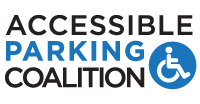The ability to safely park at one’s destination is an important component of community participation for people with disabilities. With the proper permit, people with disabilities should be able to use accessible parking spaces in public parking lots. However, a lot of people with disabilities have encountered barriers to parking. Researchers at the Research and Training Center on Independent Living at KU conducted two studies on accessible parking. This study examined using different signage to encourage reservation of van-accessible spaces for people who use ramp- or lift-equipped vehicles. Wheelchair users who travel in a ramp- or lift-equipped van (RLEV) often reach their destination only to find the van-accessible parking space occupied by a non-ramp or lift-equipped vehicle (NRLEV) that does not need the wider access aisle placed next to van-accessible spaces. This study found that alternate signage for van-accessible parking spaces can prompt rivers of vehicles without ramps or lifts to use a regular accessible space when available, reserving the van accessible space for RLEV users.
Source Credit: University of Kansas Research and Training Center on Independent Living
This material is reproduced with permission of the University of Kansas Research and Training Center on Independent Living. In addition, please add “The contents of this publication were developed under a grant from the National Institute on Disability, Independent Living, and Rehabilitation Research (NIDILRR grant number 90RT5015). NIDILRR is a Center within the Administration for Community Living (ACL), Department of Health and Human Services (HHS). These contents do not necessarily represent the policy of NIDILRR, ACL, or HHS, and you should not assume endorsement by the Federal Government.
DOWNLOAD: Parking Equity: Encouraging Reservation of Van Designated Spaces for Lift-or-Ramp-Equipped Van Users Fact Sheet
(PDF | 1mb)
